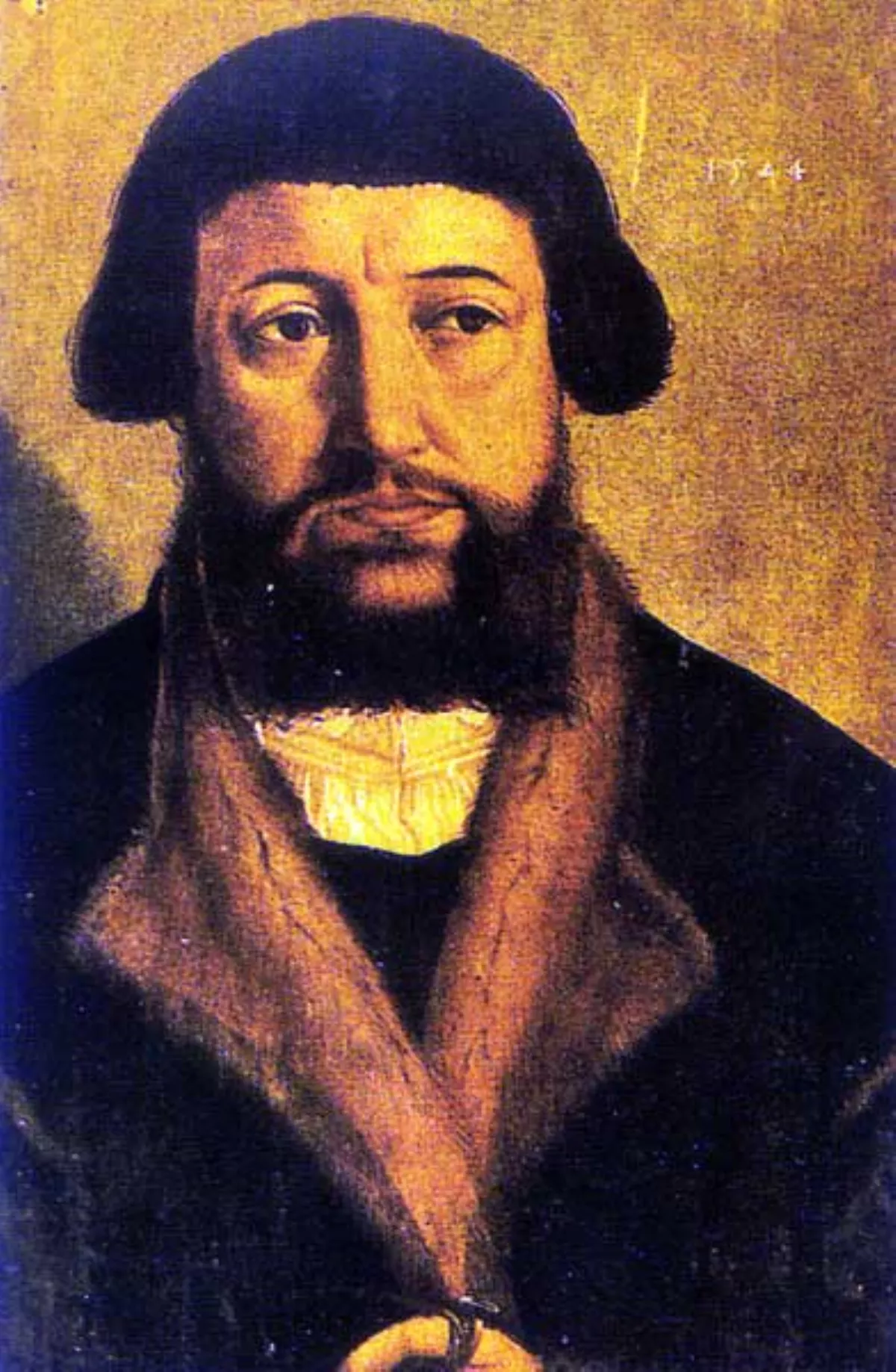 1.
1. Andreas Osiander played a prominent role in the debate which led to the city of Nuremberg's adoption of the Reformation in 1525, and in the same year Osiander married.

 1.
1. Andreas Osiander played a prominent role in the debate which led to the city of Nuremberg's adoption of the Reformation in 1525, and in the same year Osiander married.
Andreas Osiander attended the Marburg Colloquy, the Diet of Augsburg and the signing of the Schmalkalden articles.
Andreas Osiander lived and worked in Konigsberg until his death in 1552.
Andreas Osiander published a corrected edition of the Vulgate Bible, with notes, in 1522.
In 1533, Brandenburg-Nuernbergische Kirchenordnung vom Jahre 1533 was published, with Andreas Osiander assisting in both the source material and the final editing.
Andreas Osiander wrote a gospel harmony published in Basel in 1537, the Harmoniae Evangelicae, which had his Greek harmony on one page and a Latin translation on the facing page.
Andreas Osiander included annotations that explained how he had arrived at the order and how he had merged parallel accounts.
One quirk of Andreas Osiander's approach was that due to his opinions on the inspiration of the Scriptures - that they were practically a transcript of precise wordings - his approach to handling nearly any difference between gospel accounts was to assert that similar events had happened multiple times.
In 1543, Andreas Osiander oversaw the publication of the book De revolutionibus orbium coelestium by Copernicus.
Andreas Osiander added a preface suggesting that the model described in the book was not necessarily true, or even probable, but was useful for computational purposes.
Andreas Osiander did not sign the preface added to Copernicus' book, therefore many readers at the time assumed that this is what Copernicus had actually thought himself.
In 1550 Andreas Osiander published two controversial disputations, De Lege et Evangelio and De Justificatione.
Andreas Osiander's view has been described as similar to Eastern Orthodox teachings on theosis.
Andreas Osiander was a Christian mystic and his theology incorporated the idea of mystical union with Christ and the Word of God.
Andreas Osiander believed that justification for a Christian believer resulted from Christ dwelling in a person.
Contrary to Luther's belief that justification was imputed by God's grace, Andreas Osiander believed that the righteousness of a believer was accomplished by the indwelling of God; thus, God finds one righteous because Christ is in that person.
Calvin rejected these views of Andreas Osiander, as did Melanchthon and Flacius.